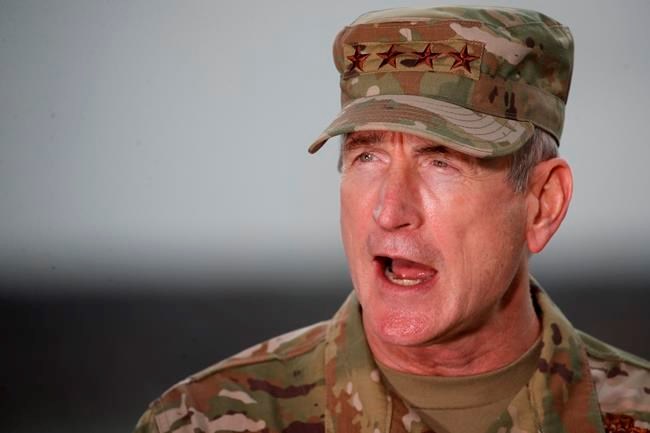WASHINGTON — North America's continental early warning system is ill-equipped for the global perils of the 21st century, Norad's deputy director of operations warned Friday as he showcased a new, data-driven system of machine learning that can wring new insights out of existing technology.
U.S. air force Brig.-Gen. Peter Fesler and just-retired Norad commander Gen. Terrence O'Shaughnessy detail the virtues of the system — the Strategic Homeland Integrated Ecosystem for Layered Defence, or SHIELD — in a new paper that illustrates the chilling threat of "horizontal escalation," a tactic designed to incapacitate the North American military before it can even mobilize.
Rather than confronting U.S. armed forces overseas in a mismatched fight, or inviting the fury of the country's nuclear arsenal, adversaries like Russia and China are actively developing long-range conventional weapons designed to strike softer economic targets in North America — ports, airports and the like — to disrupt military mobilization efforts, Fesler and O'Shaughnessy write.
In Russia's case, "Tupolev bombers and ultra-quiet, nuclear-powered submarines now frequently conduct mission rehearsals for strikes on the United States and Canada," in areas that are beyond Norad's radar coverage, they warn. And they're not posturing.
"This is not messaging," the paper continues. "The Kremlin's stealthy operations are designed specifically to remain undetected, and what good is a strategic message if it is not received."
Such a strategy exploits the "seams" that exist between the separate military pillars of Norad's detection network: early warning radar that scans the skies for enemy bombers, the ballistic missile defence system of the U.S. Northern Command and a robust naval detection network.
Those separate pillars, each designed to counter a specific threat, don't liaise with each other very well. For instance, the system Norad uses to watch for incoming Chinese or Russian missiles operate independently from Northern Command's system for monitoring for a similar threat from North Korea.
Enter SHIELD, a comparatively inexpensive, high-tech means of analyzing existing data and extrapolating it into a "common operational picture," Fesler told an online forum Friday hosted by the Canada Institute at the Washington-based Wilson Center.
The system, which is already being tested and demonstrated and used to augment Norad's capabilities, can pull and process more data from existing sensors than older, 1980s-vintage computer systems were ever able to do, he said.
"It scans the data for patterns that are not visible to human eyes, helping decision-makers understand adversary potential courses of action before they are executed," Fesler and O'Shaughnessy write.
"With an understanding of likely enemy actions, it will assist in the development of a response, weighing the risk and reward, looking several moves into the future, and allowing for decision superiority."
The system doesn't have the power to make military decisions; it can only process and interpret available data in order to better inform the commanders who do, Fesler was quick to note. And it's cheap, he added, since it can make use of existing equipment and help military planners make more cost-effective decisions without compromising current capabilities.
Andrea Charron, a professor of politics and director of the Centre for Defence and Security Studies at the University of Manitoba, said she interpreted some parts of the paper as advocating for Norad to take a more offensive stance.
She cautioned against assuming that Canada and the U.S. would be on the same page in the event Norad's core mission were to change.
"Canada embraces Norad because it has been to date a defensive command; Norad operates in and from home, not away," she said. "What is being suggested in this paper is that Norad will no longer be an exclusively defence command, but also an offensive command when necessary."
Fesler disagreed.
"We're not suggesting we would conduct offensive operations, for example, against a bomber sitting on its airfield in Russia or China," he said. "What we are talking about ... is intercepting those bombers in the approaches to North America before they release their cruise missiles."
A precursor test initiative known as Pathfinder is already demonstrating SHIELD's potential, using modern-day processing power to extract and process previously inaccessible data from existing systems and sensors without the need for costly upgrades, Fesler said.
A recent demonstration linked Pathfinder to the Federal Aviation Administration's existing radar installations and promptly showed it could detect small, unmanned aircraft — something the existing system was never able to do on its own.
"Those things are ongoing right now," Fesler said. "We're already plugging those things into the command-and-control system that Norad works with today. That's allowing us to already enhance our domain awareness and key avenues of approach."
This report by The Canadian Press was first published Sept. 11, 2020.
— Follow James McCarten on Twitter @CdnPressStyle
James McCarten, The Canadian Press



